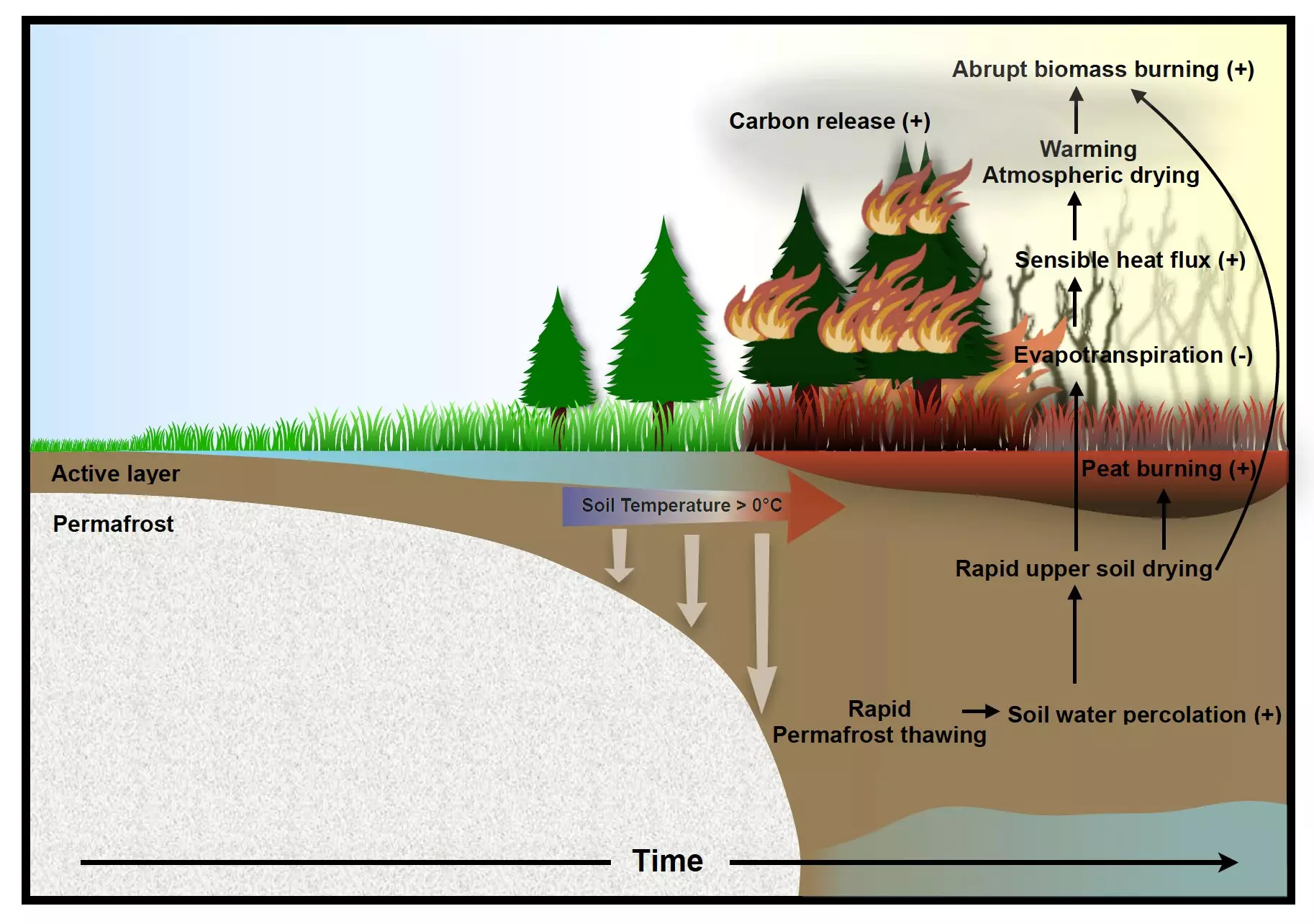The phenomenon of climate change reaches devastating new heights as a recent study published in Nature Communications has unearthed alarming implications for the Arctic and Subarctic regions. Wealthy with vast permafrost landscapes, areas like northern Canada and Siberia are already feeling the effects of warmer temperatures, manifesting as an increase in wildfire occurrences. This article delves into the critical findings of the study by an international consortium of climate scientists and permafrost specialists, revealing how future scenarios could further entrench the vulnerability of these ecosystems.
Permafrost, permanently frozen soil, serves as a significant element in the climate system, primarily influencing the water content of surrounding areas. As temperatures rise, this permafrost begins to thaw, releasing not only moisture but also carbon stored within it. The study reveals how these dual processes reshape the landscape and increase the likelihood of wildfires. Interestingly, previous climate models failed to adequately account for the interconnected dynamics between global warming, permafrost thawing, soil moisture, and wildfire behavior. This limitation stymies our understanding of future wildfire events, leaving a gaping hole in the scientific knowledge base.
The focus of the research is on the Community Earth System Model, a remarkably sophisticated simulation tool that integrates soil water dynamics with permafrost and wildfire interactions. The emphasis on water availability is paramount, as it directly influences how easily and intensely fires can ignite and spread. This model stands out from its predecessors by fully capturing these dependencies, providing a more accurate view of potential future scenarios in these vulnerable areas.
To gauge the impending risks brought about by anthropogenic climate change, researchers conducted a comprehensive ensemble of simulations spanning from 1850 to 2100. This robust dataset helps in isolating human impact from naturally occurring climatic variations. The findings indicate that by the latter half of the 21st century, extensive permafrost thawing is anticipated. This raised concern arises from quick-draining excess soil water, which leads to significant drops in moisture levels, ultimately setting the stage for drought-like conditions conducive to wildfires.
Dr. In-Won Kim, the lead author of the study, has forewarned of a staggeringly rapid transition from near-zero fire activity to widespread, intense wildfires within a short span. These findings underline a key vulnerability: not only will the Arctic and Subarctic face increased fire risk, but the frequency and intensity of these events are predicted to escalate dramatically over just a few years.
Another alarming factor influencing wildfire dynamics is the ‘CO2 fertilization effect.’ As carbon dioxide concentrations in the atmosphere rise, vegetation biomass in high-latitude regions may also increase. While this might superficially appear to have a positive environmental impact, it effectively enhances the fuel available for wildfires. The synergy between thawing permafrost and elevated biomass levels creates a perilous situation where fire risks are heightened even further, compounding the climate crisis already at play.
Associate Professor Hanna Lee emphasizes that to simulate future permafrost degradation accurately, more precise models are essential—particularly those accounting for small-scale hydrological processes. The predictive capacity of meteorological models should be expanded through enriched observational datasets to paint a clearer picture of these complex interactions moving forward.
As wildfires rage, their effects ripple through atmospheric systems. They release large amounts of carbon dioxide, along with black and organic carbon, which contribute to further climate warming. This creates a feedback loop where increased temperatures lead to more intense fires, and in turn, more greenhouse gas emissions exacerbate warming. While the study notes this feedback mechanism, it also highlights that current earth system models have failed to integrate these interactions effectively.
The research ultimately reveals a cascading effect that not only affects the Arctic and Subarctic but, by extension, the entire planet’s climate system. It is imperative that scientists prioritize the understanding of these intricate interrelations to devise effective strategies for mitigating climate change and its associated risks.
In sum, the interplay between permafrost thawing and wildfire occurrences presents a complex challenge as climate conditions continue to change. The focus should shift towards refining climate models, acknowledging the intricate dependencies among soil moisture, permafrost, and fire dynamics to prepare for a future shaped by the realities of a warming world.

